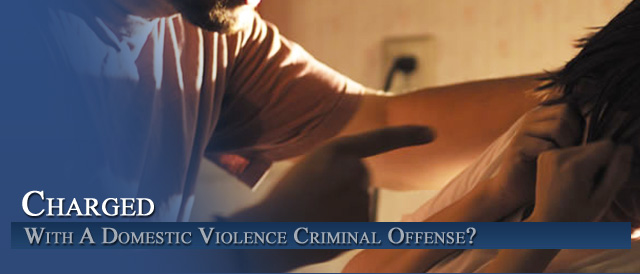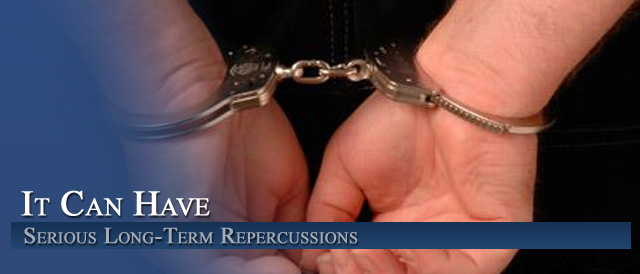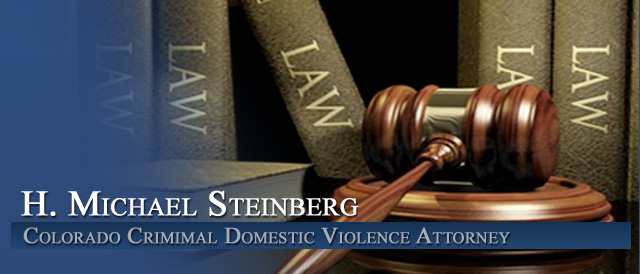




Colorado Domestic Violence Cases – The Levels of Treatment A – B – C Explored – The Colorado Domestic Violence Offender Management Board Standards For Treatment With Court Ordered Domestic Violence Offenders
Introduction: Just as in Colorado DUI Cases and Colorado Sex Offender Cases – Colorado Domestic Violence cases now have levels of treatment that must be completed BEFORE the offender will be “released” from treatment. Understanding those levels is the KEY to getting off the treatment domestic violence “ride.”
What follows is from the Colorado Standards of Domestic Violence Treatment – these standards define the different levels of treatment.
There are three levels of treatment for Colorado Domestic Violence Cases
Level A (low intensity)
Level B (moderate intensity),
and Level C (high intensity).
Offenders are placed in a level of treatment based on the findings from the intake evaluation, offender treatment needs, and level of risk as identified by the DVRNA.
The Courts and Probation officers believe that current research demonstrates that matching offender risk to intensity of treatment reduces recidivism.
Intensity of treatment is differentiated by frequency of clinical contact and content of treatment.
Initial Determination of Treatment Level is recommended by the Approved Provider after the Offender Intake Evaluation has been completed and approved by the MTT.
Escalation of Treatment Levels in Colorado Domestic Violence Cases
While some offenders may remain in the same level throughout treatment, there is also the ability to move offenders to a different level of treatment as needed.
This is based on new information such as change in risk factors, mitigation of risk, continuing abuse, or denial.
Only offenders in Level C may be considered for a decrease in treatment level and then only to Level B.
No offenders in Level B or C are eligible for a decrease in treatment to Level A.
Decreasing an offender’s level of intensity of treatment shall only occur at scheduled Treatment Plan Review intervals and shall be approved by consensus of the MTT. This change in treatment level shall include written justification placed in the offender’s file describing the need for change in treatment.
Increasing an offender’s level of treatment to a higher intensity of treatment may occur at any time and shall be approved by consensus of the MTT. This change in treatment level shall include written justification placed in the offender’s file describing the need for change in treatment.
Level A (Low Intensity)
The offender population that is identified for Level A at the initial placement in treatment does not have an identified pattern of ongoing abusive behaviors. They have a pro-social premier-pharmacy.com support system, may have some established core competencies, minimal criminal history, and no evidence at the beginning of treatment of substance abuse or mental health instability.
Placement Criteria for Level A
1. MTT consensus
2. Offenders are not appropriate for Level A if there is still missing information from the intake evaluation or the Domestic Violence Risk and Needs Assessment instrument (DVRNA). The responsibility to obtain information may rest with the MTT or the offender.
3. If one or no risk factors are identified from the implementation of the DVRNA and the pre or post-sentence intake evaluation (Standard 4.0 ), there is a need for low intensity treatment.
4. Offenders who are placed in Level B or C are never eligible to be moved to Level A.
The MTT should take into consideration victim safety concerns before placing an offender into Level A. Because this level of treatment for an offender is low intensity and potentially a shorter period of time, victim safety must continue to be monitored where possible and appropriate. Some victims may be reluctant to provide information regarding the offender at the point of initial evaluation or early in treatment and more information may become available as treatment continues.
Intensity of Treatment Level A
1. Content and Contact
a. Group clinical sessions that address psycho-educational content, core competencies, criminogenic needs, and Treatment Plan issues.
b. Clinical sessions shall be held once a week
c. Transition
If new disclosure/information is obtained and risk factors increase, offender shall be moved to:
Level B or Level C.
Level B (Moderate Intensity)
The offender population that is identified for Level B treatment has moderate risk factors. At the initial placement of treatment, they have an identified pattern of ongoing abusive behaviors. There may also be some denial of the abuse and some moderate resistance to treatment. They may or may not have a pro-social support system and may have some criminal history. There may be some evidence at the beginning of treatment of moderate substance abuse or mental health issues.
Therefore, the following is identified as the most appropriate intensity of treatment for this population.
Placement Criteria for Level B
1. MTT consensus
2. Two to four risk factors identified in the DVRNA or one Significant Risk Factor identified in the DVRNA that indicates initial placement in Level B. Additionally, the pre- or post-sentence intake evaluation (Standard 4.0) identifies a need for moderate intensity of treatment.
3. Additional risk factors identified by the MTT for an offender in Level A justify a placement in Level B.
4. If risk factors are mitigated for an offender in Level C, the offender may be moved to Level B if there is MTT consensus.
Intensity of Treatment for Level B
1. Content and Contact: Weekly group clinical sessions that address core competencies, criminogenic needs, and Treatment Plan issues using cognitive behavioral treatment plus at least one additional monthly clinical intervention from the following list:
a. An individual session to address denial or resistance
b. A clinical contact to further evaluate and/or monitor issues such as mental health
c. Additional treatment such as substance abuse treatment or mental health treatment
Substance abuse treatment: Violence cannot be successfully treated without treating substance abuse problems. All offenders evaluated as needing substance abuse treatment shall complete such treatment. Such treatment shall be provided by a CAC II or higher. If the Approved
Provider does not provide a substance abuse treatment program, the Approved Provider shall conduct shared case supervision and treatment planning with the counselor providing the substance abuse treatment at a minimum of once per month or more frequently as the case dictates.
Transition
If new disclosure/information is obtained and risk factors increase, offender shall be moved to Level C. Offenders at this level are never eligible to move to Level A.
Level C (High Intensity)
The offender population that is identified for Level C treatment has multiple risk factors.
These individuals will most likely require cognitive skills based program. There may be significant denial and high resistance to treatment. These individuals often have employment and/or financial instability. In general they do not have a pro-social support system. They are likely to have a criminal history and substance abuse and/or mental health issues. Therefore, stabilization of the offender and crisis management may be needed at the beginning of treatment.
Placement Criteria for Level C
1. MTT consensus
2. Five or more risk factors identified in the DVRNA or one Critical Risk Factor identified in the DVRNA that indicate initial placement in Level C Additionally, the pre- or post-sentence intake evaluation (Standard 4.0) identifies a need for a high intensity treatment.
3. Additional risk factors are identified by the MTT for an offender in Level A that justifies a placement in Level C.
4. Additional risk factors are identified by the MTT for an offender in Level B that justifies a placement in Level C.
Intensity of Treatment for Level C
1. Content and Contact: Minimum of two contacts per week. One contact to address core competencies and one treatment session such as cognitive skills group, substance abuse, or mental health issues group.
a. A clinical contact involves therapeutic intervention specifically related to the offender’s criminogenic needs and risk factors. Therefore the two contacts cannot be on the same day.
b. The intent of this level of treatment is to disrupt patterns of abuse.
c. Face to face contact is required so the Approved Provider can assess the offender’s attention level responsiveness, appearance, possible substance abuse, and mental health status. This contact will also assess and promote victim safety.
2. Substance abuse treatment: Violence cannot be successfully treated without treating substance abuse problems. All offenders evaluated as needing substance abuse treatment shall complete such treatment. Such treatment shall be provided by a CAC II or higher. If the Approved Provider does not provide a substance abuse treatment program, the Approved Provider shall conduct shared case supervision (treatment planning) with the Approved Provider providing substance abuse treatment at a minimum of once per month or more frequently as the case dictates.
Transition
If the offender progresses in treatment and if risk factors are mitigated, the MTT may reduce the offender intensity of treatment to Level B. Offenders in Level C are never eligible to move to Level A.
Other Articles of Interest:
- The Colorado Domestic Violence Multi-disciplinary Treatment Team (MTT) Approach to Mandatory Domestic Violence Treatment Requirements
- Colorado Criminal Domestic Violence Laws – Couple’s or Martial Counseling NOT Allowed in Domestic Violence Treatment Programs
- Important Links in Colorado Domestic Violence Cases
- The New Colorado DV Treatment Standards
- Colorado Domestic Violence Treatment Requirements












